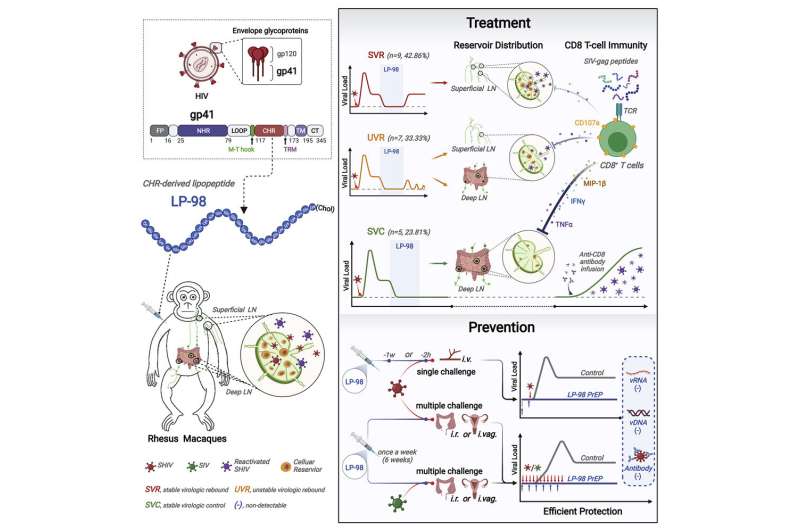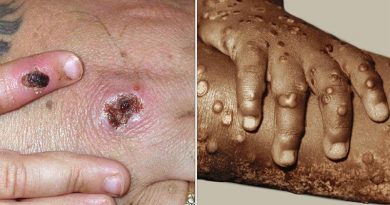A fatty designer molecule shows promise as an HIV treatment

A team of researchers at the Chinese Academy of Medical Science has found that a fatty molecule they created worked effectively against a monkey version of HIV. In their paper published in the journal Cell, the group describes developing the molecule and how well it worked when tested in rhesus macaques.
HIV and AIDS were first diagnosed in humans in the 1980s, when it was still deadly. Over the past several decades, medical scientists have learned more about the disease and the virus behind it and have developed a host of therapies to treat infected people. Currently, existing treatments drastically reduce the HIV viral load in infected people, but because of the virus’s latent reservoirs, therapies cannot wipe it out entirely. Thus, patients must take drugs for the rest of their lives to remain healthy. In this new effort, the researchers have developed a fatty molecule that might one day relieve patients from medication regimens.
To create the fatty molecule, the researchers combined cholesterol, a very well-known type of fat, with amino acids to create a new molecule called LP-98, which is a type of lipopeptide-based fusion inhibitor. Suspecting it might work against the HIV virus, the researchers gave it to several rhesus macaques that were infected with the simian immunodeficiency virus (SIV), a virus quite similar to the HIV virus.
Source: Read Full Article



